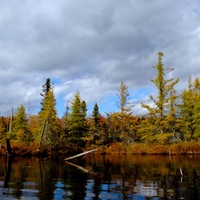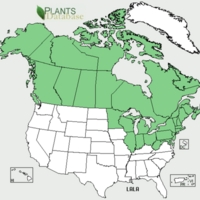Tamarack : Habitat
Tamaracks are able to grow in extremely harsh conditions, in areas that have cold climates and acidic soil with poor drainage. This environment can be found in boreal forests and bogs. Tamarack is a pioneer in areas where there are bogs, however they are typically taken over by other species during succession. In addition, tamaracks growing around bogs may never achieve maximum height, since their growth can be stunted by the low nutrient content in the soil. They prefer boreal forest environments (consisting of primarily pines, spruces, and larches) where soils are acidic and there is high peat content.
An ecosystem type that includes tamaracks found in Vermont is the Spruce-Fir-Tamarack swamp. Again, these are bog type areas with high acidity and poor drainage. Some other vegetation associated with tamaracks in this ecosystem type are mountain holly, wild raisin, and sheep laurel, all found in the understory. Sphagnum mosses are found here as well, as they thrive in these bog areas.
Wildlife associated with this forest cover type
include white tailed deer, red squirrel, olive-sided flycatcher, boreal chickadee, Nashville warbler, magnolia warbler, and many others.
The tamarack’s home range spans across the northern part of North America. It is found in all of New England, as well as all across Canada up to Alaska.



